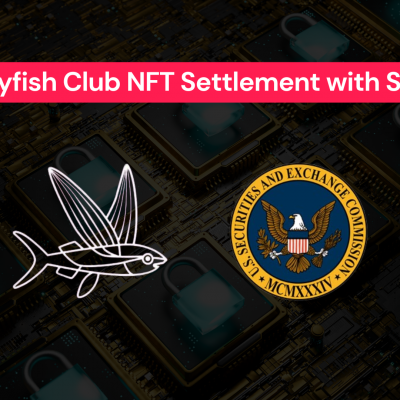As of this week, the US is officially recognizing cryptocurrencies as a legal form of money. That means that in addition to being regulated by other financial regulators and governing authorities, they are now classified as securities subject to federal law with an accompanying set of rules on how they can be traded and exchanged.
The “recent executive orders 2022” is a recent executive order that was issued by Joe Biden. The order will help to regulate cryptocurrency and blockchain technology.
The Executive Order on Ensuring Responsible Development of Digital Assets lays the framework for more transparent cryptocurrency rules in the US. Here’s what some insiders in the business have to say about it.
- On Wednesday, President Biden issued an Executive Order ensuring the responsible development of digital assets.
- Many in the cryptocurrency business are hopeful that it will lead to more transparent rules and a more egalitarian approach to assets.
- Others believe that the ranking is meaningless or focuses too much on central bank digital currency.
The crypto sector has been pleading with the US federal government for years to coordinate its efforts on crypto policy, fed up with enforcement-based regulation.
The Initial Steps
By signing the Executive Order on Ensuring Responsible Development of Digital Assets today, President Biden took a step in that direction. The order’s stated goals are to find ways to reduce risks to both individual consumers and the global financial system, as well as to prevent cryptocurrency’s “misuse” for criminal purposes, all while cementing the US’ role as a technological leader so that Americans who are “underserved by the traditional banking system” can gain more financial access.
The Fundamentals of Cryptocurrency Regulation
The measure requires a slew of agencies to submit reports to the president on a number of topics within three to seven months. Officials from the Departments of Intelligence, State, and Treasury, for example, have 90 days to submit a plan to restrict the use of bitcoin in criminal and terrorist funding. The SEC, FTC, CFTC, and other federal banking authorities will have 180 days to publish a report suggesting consumer protection measures.
In other words, it’s building the framework for the kind of extensive rules that industry players have both wanted and dreaded if they don’t get their way.
Optimistic Signs
The White House’s plan to employ a “whole-of-government strategy to simultaneously exploit benefits while managing and minimizing inherent risks in responsible innovation is promising,” according to Jeremy Allaire, CEO of USDC stablecoin issuer Circle. He claims that Circle, which pushed for this strategy, is convinced that legislators would leave the review process with a thorough knowledge of the prospects that crypto brings.
The directive “recognizes the need for clarity so the industry may continue to expand, grow, and meet the ever-increasing passion and momentum we see for the sector,” according to Denelle Dixon, CEO of Stellar Development.
Sensible Decisions
“For a young sector, this is a logical move toward protection, law enforcement, and education,” says Blockchain Association Head of Governmental Relations Dave Grimaldi.
The directive, according to Coin Center Executive Director Jerry Brito, “stands in sharp contrast” to recent hot takes from politicians and the media on the perils of cryptocurrencies, whether it’s harming the environment or hypothetically supporting Russia in escaping sanctions: “When serious authorities take a sober look at crypto, the response is not to burn their hair on fire, but rather to see it as an innovation that the United States will wish to develop and lead while reducing clear dangers,” says the executive order.
The Figures
Dollars 1.9 trillion That is the worth of the world’s cryptocurrencies as of March 9th, down around 36% from an all-time high of over $3 trillion in November, but up a whopping 630% in the previous two years.
A Deficit in Enthusiasm
Biden’s efforts, according to Erik Voorhees, a fervent libertarian and the inventor of cryptocurrency platform ShapeShift, are “more of the same”: “Basically, the crypto Executive Order says ‘we’re going to look at this stuff’ (as if they haven’t for years) and then lists a lot of cliches about balancing innovation with financial system security.”
The ruling is “strong on CBDCs” and “doesn’t mention Bitcoin,” according to Human Rights Foundation CSO Alex Gladstein. Gladstein views Bitcoin as a key instrument for promoting human rights, whereas central bank digital currencies (CBDCs), such as the one being tried in China, are seen as possible vectors for financial monitoring.
Senator Cynthia Lummis (R-WY), a staunch Bitcoin advocate, adds that she is “unconvinced on the necessity for a central bank digital currency,” but that she “will continue to carefully follow the Federal Reserve’s activities in this area.”
Finally, some ideas
Some are hoping for unforeseen effects as a result of the presidential order. According to Messari CEO Ryan Selkis, the executive order may provide President Biden a chance to “look at the SEC’s shortcomings in safeguarding investors, supporting fair crypto markets in the US, and fostering capital formation”—all of which are goals laid forth in the executive order.
The Treasury will collaborate with other departments to produce a study on the future of money and payment systems, according to the presidential directive.
The “white house executive order crypto” is an executive order by the Vice President Joe Biden that will regulate cryptocurrencies. The price of Bitcoin and Ethereum have risen because of this new regulation.




